Did you know that Mexico consumes more than 15,000 metric tons of pan de muerto every year for Día de los Muertos, and millions of sugar skulls are hand-crafted just for this vibrant tradition? Día de los muertos traditions and food are not just about ancestral rituals—they’re about celebrating life, community, and unending love across generations. Dive in to explore the heart, flavors, and symbolism of this iconic celebration, from sacred altars to the sweet bread that unites families.
What You'll Learn About Día de los Muertos Traditions and Food
The origins and cultural significance of día de los muertos traditions and food
Key symbols, rituals, and foods such as pan de muerto and sugar skulls
Differences between Día de los Muertos and Halloween
How communities in Mexico, Latin America, and the U.S. keep these traditions alive
Unveiling Día de los Muertos Traditions and Food: Why This Traditional Day Matters Today
“Día de los Muertos is not about mourning, but about remembrance, joy, and the powerful legacy of those we love.” – Cultural Anthropologist Maria Lopez
In today’s ever-busy world, rituals that reconnect us with our roots and loved ones hold even greater significance. Día de los muertos traditions and food serve as a vibrant bridge between past and present, combining centuries of indigenous ritual with a welcoming, festive flair. This traditional day stands out for its mix of heartfelt remembrance and joyful celebration. Families throughout Mexico, Latin America, and the U.S. gather to honor departed loved ones—not with somber ceremonies, but with music, colorful altars, laughter, and their loved ones’ favorite foods like pan de muerto, mole negro, and calabaza en tacha. The day’s traditions and recipes have become symbols of resilience and unity, keeping ancestral stories alive at kitchen tables and public squares alike. Understanding these customs means embracing a deeper sense of belonging and heritage that transcends borders.
Unlike many modern holidays, Día de los Muertos invites everyone to participate in a respectful act of cultural remembrance. From the marigold-studded ofrenda in a family home to lively community parades in Mexico City, the purpose is always the same: to cherish those who came before us and to savor the flavors, stories, and colors they left behind. As you learn about these enduring rituals and dishes, consider how they continue to shape and inspire new generations on both sides of the border.
Startling Insights: Día de los Muertos Traditions and Food By the Numbers
Key Statistics on Día de los Muertos Traditions, Participation, and Popular Traditional Foods | |
Aspect |
Statistic |
|---|---|
Participants in Mexico (2023) |
Over 36 million people |
Ofrendas Built Nationwide |
Estimated 12 million altars |
Pan de Muerto Consumed Annually |
15,000+ metric tons |
Sugar Skulls Produced Per Season |
20 million (handmade) |
Total Festival Parades in Mexico City |
25 major events |
U.S. Día de los Muertos Festivals |
200+ celebrations in 40 states |
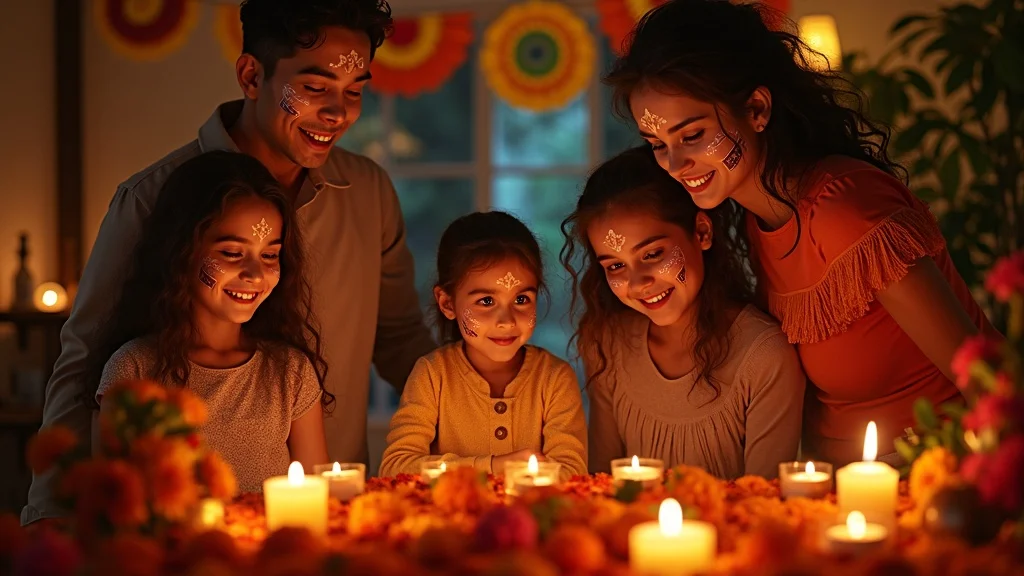
The Origins of Día de los Muertos Traditions and Food: Blending Indigenous and Catholic Customs
Día de los muertos traditions and food are much more than modern-day festivities; their roots extend deep into ancient Mesoamerican cultures. Indigenous peoples, including the Aztec and Maya, held ceremonies to honor the spirits of ancestors long before Spanish colonization. These rituals, centered around remembrance, food offerings, and seasonal changes, formed the basis of what would become a nation-wide, and now global, celebration. When Catholicism arrived with the Spanish in the 16th century, indigenous practices fused with All Saints’ Day and All Souls’ Day observances, creating the unique blend that defines Día de los Muertos today. This blending preserved native symbols—such as marigolds and calaveras—and introduced new elements like processions, masses, and symbolic foods including pan de muerto. Across Latin America, this syncretism resulted in distinctive yet familiar traditions, with each community adding its own flavors and customs over centuries.
Today, the holiday stands as a testament to resilience and cultural pride. Whether celebrated in small villages or bustling cities like Mexico City, the heart of Día de los Muertos lies in its rituals of reunion—with family, ancestors, and heritage. The importance of food in these ceremonies cannot be overstated. Offerings of mole negro, calabaza en tacha (candied pumpkin), and sugar skulls are shared among the living and placed on ofrendas for those who have passed. Through these acts, families reaffirm a connection that’s as much about life as it is about death—a powerful demonstration of remembrance made deliciously tangible through iconic recipes.
The culinary traditions of Día de los Muertos are a testament to the rich tapestry of Latin American cuisine, where every dish tells a story. If you’re inspired by the idea of honoring heritage through food, you might also enjoy exploring how tomates rellenos de atún bring a unique twist to traditional celebrations and offer a delicious way to connect with family and community.
How Día de los Muertos Differs from Halloween
Although often compared and frequently close on the calendar, Día de los Muertos differs dramatically from Halloween in both meaning and spirit. While Halloween traditionally focuses on costumes, scares, and trick-or-treating, Día de los Muertos is built on the profound act of honoring departed loved ones through thoughtful rituals, food, music, and storytelling. Halloween has its roots in Celtic festivals and became heavily commercialized in the U.S.; in contrast, Día de los Muertos remains a deeply personal and family-centered occasion rooted in indigenous, Latin American, and Catholic practices. Symbols like skulls and skeletons—macabre on Halloween—are artful and joyful in the Day of the Dead celebration, representing the cycle of life and death rather than fear.
Decorations such as marigolds, papel picado (colorful paper banners), and pan de muerto are created and displayed as loving tributes to ancestors, not for spooking neighbors or strangers. Unlike Halloween candies, the foods crafted for Día de los Muertos—like sugar skulls, tamales wrapped in corn husk, and calabaza en tacha—represent offerings, memories, and the joy of reunion. This difference transforms the holiday into a communal act of memory, not just a night of mischief and treats.
The Meaning Behind de los Muertos Rituals and Symbols
Every aspect of día de los muertos traditions and food carries deep symbolism that connects the living with those who have passed on. Most prominently, the ofrenda (altar) serves as the spiritual heart of the celebration. Homes and graveyards are adorned with marigold flowers (cempasúchil), whose brilliant orange color and distinctive scent are believed to guide spirits home. Candles light the way, while incense purifies the space, and photographs ensure that no family member is forgotten.
Foods such as pan de muerto, mole negro, and calabaza en tacha are not chosen lightly; each offering represents the beloved's favorite foods or meaningful life experiences. The whimsical sugar skulls (calaveras de azúcar), often personalized with names, symbolize the sweet memory of the deceased and the acceptance of the cycle of life and death. Artistic elements—like La Catrina makeup and skeleton figures—act as reminders to embrace life with humor and hope, dissolving the boundaries between the physical and spiritual worlds through creativity and celebration.
Day of the Dead: Indigenous Roots and Catholic Influences
To truly grasp the essence of día de los muertos traditions and food, it’s important to recognize the holiday’s syncretic origins. Indigenous celebrations, already present in Mesoamerica for millennia, focused on honoring gods and spirits through food, music, and vibrant offerings. The arrival of Spanish conquistadors brought Catholic beliefs, merging with these practices during the first days of November—coinciding with All Saints’ Day and All Souls’ Day. This combination gave birth to customs ranging from the making of pan de muerto (bread of the dead celebration) and altar-building to the communal gatherings that transform city streets into festive mosaics of sound and color.
In regions throughout Mexico and Latin America, the influence of both indigenous and Catholic traditions is omnipresent. You’ll find unique regional variations of food, music, and religious rites—but above all, a shared understanding that nurturing spiritual bonds and honoring those who passed makes the present moment more meaningful. This delicate balance between past and present, sacred and festive, is what makes Día de los Muertos one of the world’s most cherished and authentic traditions.
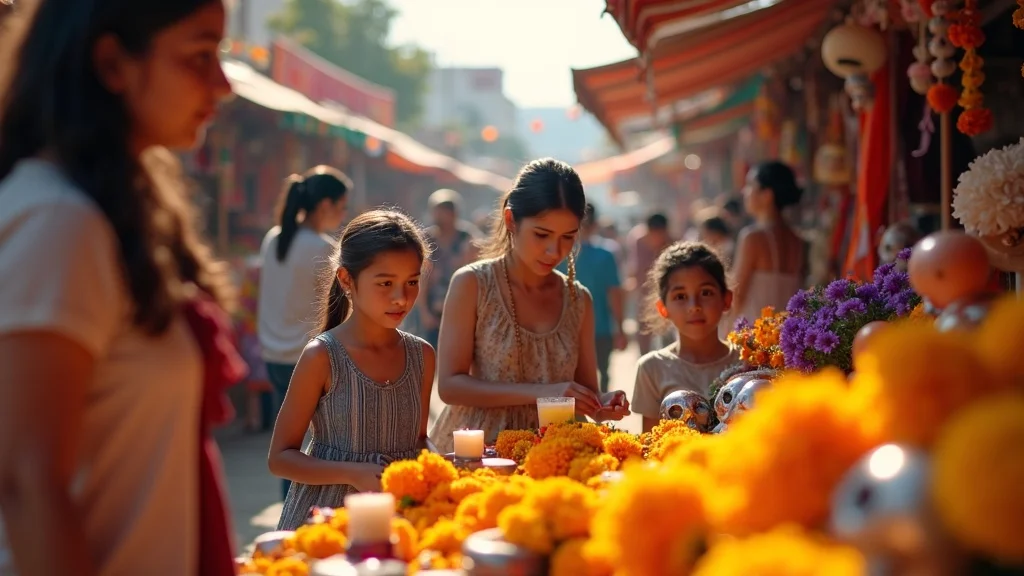
Traditions of Día de los Muertos: Honoring Loved Ones de los Muertos Style
The vibrant tapestry of día de los muertos traditions and food comes alive in the weeks leading up to November 1st and 2nd. Households and public spaces across Mexico and beyond are transformed with the construction of elaborately decorated ofrendas. These altars, both grand and humble, pulsate with memories and love, adorned with marigold petals, candles, incense, and cherished photographs of departed loved ones. In each arrangement, symbols and tastes coalesce to both honor the past and nurture bonds in the present. Rituals include gathering at family gravesites, cleaning and decorating with care, and spending hours telling stories, singing, and sharing handmade dishes. This is not just an act of remembrance—it’s a living, breathing act of togetherness.
The streets erupt with music, art, and collective joy as día de los muertos traditions spill into outdoor parades and festivals. Families participate in costume contests featuring La Catrina (the grand lady of the dead), paint intricate calaveras on their faces, and carry offerings to community altars. Foods like calabaza en tacha and pan de muerto are ever-present, symbolizing continuity and belonging. Whether in a tiny pueblo or in the bustling heart of Mexico City, each act—no matter how small—serves as a thread connecting individuals to a greater cultural story.
Building the Ofrenda: The Heart of Día de los Muertos Traditions
Constructing an ofrenda is often a family-wide undertaking that mixes tradition, creativity, and deep emotion. The altar typically showcases multiple tiers representing the underworld, earth, and heaven—each packed with symbolic objects intended to welcome and guide the spirits of ancestors. Marigolds are scattered in patterns to create a fragrant pathway home. Candles—sometimes one for each lost family member—cast a gentle glow across framed photographs, prized mementos, and religious icons. Glasses of water, salt, and incense balance and purify the senses, while favorite personal items remind spirits they are never forgotten.
But perhaps the most cherished element of the ofrenda is the food: mountains of pan de muerto, bowls of calabaza en tacha (candied pumpkin), tamales in corn husk, and plates of mole negro are all carefully prepared and lovingly placed. Not only do these dishes reflect the tastes of the deceased, but they invite the family’s new generations to learn recipes, stories, and traditions firsthand—passing the torch of remembrance forward.
Marigolds, Calaveras, and Candlelight: Iconic Día de los Muertos Symbols
Marigolds (cempasúchil) stand at the center of día de los muertos traditions and food, their petals said to attract souls with their brilliant color and scent. The luminous trails they create, from ofrendas to cemeteries, help spirits navigate home. Calaveras or sugar skulls, intricately decorated and often inscribed with names, are playful reminders that death is part of life—a cycle to be respected, not feared.
Candlelight is another omnipresent symbol, representing hope, memory, and the eternal nature of love. Alongside, pan de muerto is often shaped with bone-like decorations as a nod to mortality and tradition. Together, these icons form a language of remembrance, inviting people from all walks of life to honor the departed and celebrate the pleasures of community and gastronomy.
Community Events: Día de los Muertos Parades and Celebrations in Mexico City and Beyond
Across Mexico City and communities throughout Latin America and the U.S., Día de los Muertos parades are an exuberant testament to shared history and the importance of social celebration. City streets become rivers of color as floats, dancers, musicians, and La Catrina impersonators march in costume, tossing flower petals and sweets into enthusiastic crowds. These public celebrations unite thousands with song, dance, and the delicious aroma of street vendors selling pan de muerto and calabaza en tacha.
Public altars or collective ofrendas arise in parks, plazas, and cultural centers, offering places for all to join the remembrance. The fusion of music, art, food, and communal storytelling at these gatherings demonstrates that día de los muertos traditions and food are as much about community as they are about ancestry. Whether you’re a participant or an observer, it’s nearly impossible not to be swept up in the joy and reverence that fills the air.
Ofrendas (altars) decorated with photos, marigolds, and mementos
La Catrina makeup and costumes
Calabaza en tacha and pan de muerto offerings
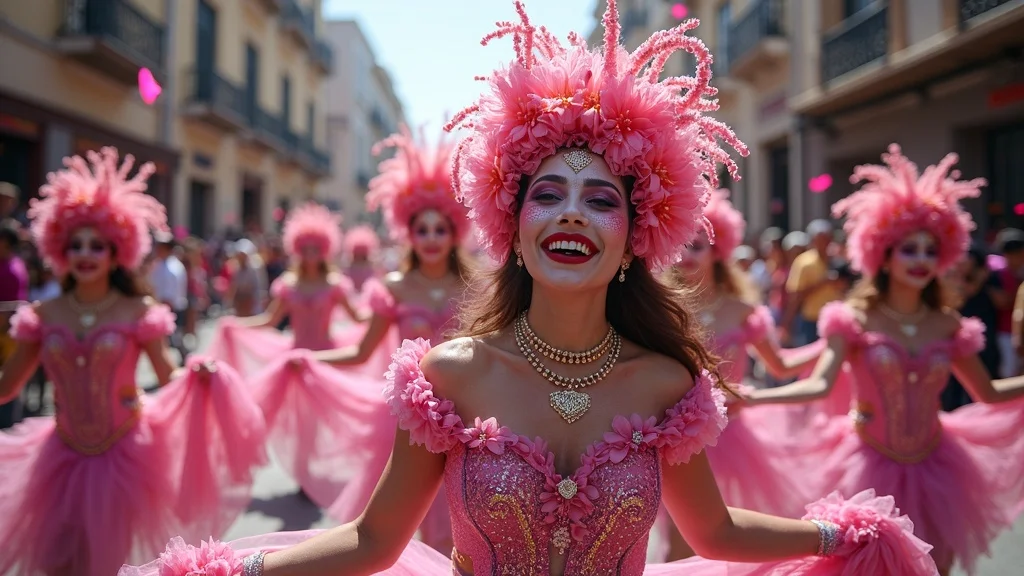
Día de los Muertos Traditions and Food: The Culinary Heart of the Celebration
If the altar is the soul of Día de los Muertos, then food is its beating heart. Día de los muertos traditions and food are both a tribute and a feast—a banquet for ancestors and present-day families alike. Staple dishes include pan de muerto (bread of the dead), mole negro (a rich, spiced chocolate-chile sauce served over chicken or turkey), tamales wrapped in corn husk, and calabaza en tacha (candied pumpkin cooked with cinnamon and piloncillo). These are not mere meals, but profound gestures of love, heritage, and gratitude.
Alongside, sugar skulls (calaveras de azúcar) play a charming yet powerful role. Beautifully adorned, they are more than sweets—they represent the sweet vitality of life and the cherished souls being honored. Each recipe, technique, and ingredient has been passed down through generations, steadfastly surviving colonization, migration, and modern life’s distractions. With every bite or sip, families and friends are reminded that they are never alone—the flavors and stories of those they loved fuse into the present, nourishing body and spirit together.
Pan de Muerto: The Bread at the Center of de Muerto Celebrations
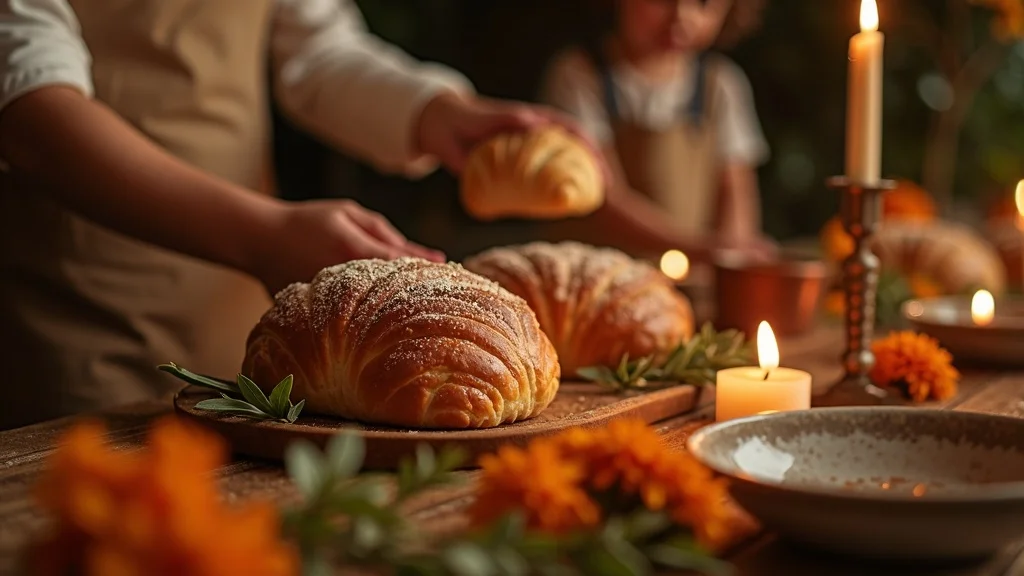
The beloved pan de muerto is perhaps the most iconic culinary symbol of día de los muertos traditions and food. This sweet, softly aromatic bread, often flavored with orange blossom and adorned with bone-shaped decorations, is prepared in homes and bakeries across Mexico and the U.S. in the days leading up to the celebration. Each loaf is unique, lovingly kneaded and dusted with sugar, symbolizing the ephemeral nature of life. For many, baking and sharing pan de muerto is a deeply personal act—a way to keep cherished memories alive and invite the spirits to join in the family’s stories and laughter.
The bread’s ingredients and shape have symbolic resonance: round for the cycle of life, crossbones for mortality, and sugar for the sweetness of existence. Whether eaten with hot chocolate or coffee, or lovingly placed on the ofrenda among marigold petals and candles, pan de muerto bridges generations and regions. On November 1st and 2nd, it graces nearly every table and altar—no celebration of Día de los Muertos feels complete without it.
Sugar Skulls and Calabaza en Tacha: Sweet Treats Symbolizing Life and Death
No Día de los Muertos is complete without sugar skulls and calabaza en tacha. These treats are as beautiful as they are meaningful. Hand-molded and decorated in dazzling colors, sugar skulls (calaveras de azúcar) carry the names of departed loved ones, signifying a spirit’s lasting imprint. Their cheerful designs convey that remembrance can be playful, not somber, and that our connection to loved ones is a source of joy.
Calabaza en tacha (candied pumpkin) is another favorite—for both spirits and the living. Simmered with cinnamon and raw sugar (piloncillo), this dish fills homes with a fragrant, comforting aroma. Its sweetness calls children and adults alike to the ofrenda, reminding all that love outlasts farewells. Whether you’re tasting these treats at home, at a festival, or in a Mexican bakery, you’re participating in a centuries-old dialogue between past and present—one that’s flavored with gratitude, memory, and plenty of festive spirit.
Mole Negro, Tamales, and Traditional Drinks: Day of the Dead Culinary Rituals
Mole negro, a luscious and complex sauce made with chilies, chocolate, nuts, and spices, is a star of many día de los muertos traditions and food tables—especially in Oaxaca and southern Mexico. Its deep, smoky flavor represents the fusion of indigenous and colonial recipes, and its preparation is often a family-wide production that honors both skill and heritage. Tamales, wrapped lovingly in corn husk and filled with pork, chicken, or sweet flavors, are ubiquitous, lining altars and family buffets.
Drinks are equally important: champurrado (a thick chocolate drink), atole (corn-based and lightly sweet), and pulque (fermented agave) are common companions to meal and memory alike. Shared among the living, set out for ancestors, or presented to community guests, these traditional food and drink pairings highlight the palpable warmth, hospitality, and unity embedded in Día de los Muertos.
Top Traditional Día de los Muertos Foods in Mexico City and Other Regions | |||
Mexico City |
Oaxaca |
Michoacán |
Yucatán |
|---|---|---|---|
Pan de muerto |
Mole negro, pan de muerto |
Atole, uchepos (sweet corn tamales) |
Mucbil pollo (large tamal pie) |
Calabaza en tacha |
Chocolate atole |
Corundas (triangular tamales) |
Pib (buried tamales) |
Pan de muerto + hot chocolate
Mole negro + white rice & turkey
Tamales + champurrado
Calabaza en tacha + café de olla
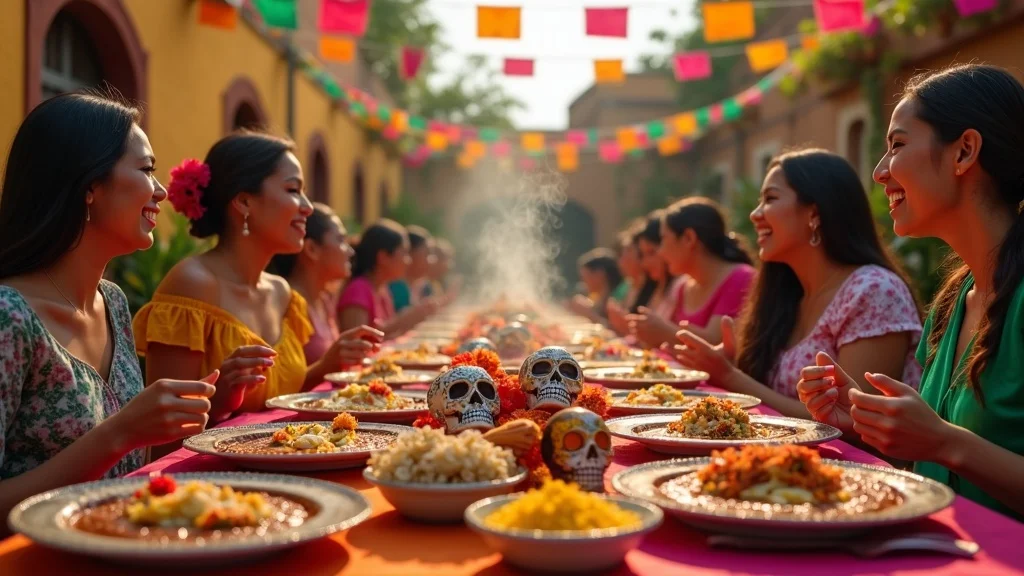
Día de los Muertos Traditions and Food in the U.S.: Celebrating Across Borders
As communities have migrated and blended, día de los muertos traditions and food have found new expressions throughout the United States. From California to Texas and Illinois, local festivals, museum exhibits, and school events invite both Latinos and non-Latinos to honor the holiday’s history and message. Custom-built ofrendas appear in public libraries, city parks, and even shopping centers. Street festivals feature live mariachi music, face painting, and traditional food stalls overflowing with pan de muerto, tamales, and colorful sugar skulls.
This cross-cultural embrace is more than a trend—it’s a reflection of how meaningful, adaptable, and unifying día de los muertos traditions and food truly are. As second- and third-generation families share recipes and stories with new friends and neighbors, the significance deepens, illustrating that honoring ancestors and savoring traditions are universal delights, no matter where you call home.
Evolving Traditions: How Día de los Muertos Is Honored by Mexican and Latinx Communities in the U.S.
Rituals continue to evolve as U.S.-based families mix their own experiences into the tapestry of Día de los Muertos. Some build ofrendas that celebrate icons of American culture alongside Mexican ancestors. Others introduce regional foods, like pumpkin pie or BBQ, onto altars beside pan de muerto and calabaza en tacha. This blending of old and new keeps traditions vibrant and ensures that younger generations grow up proud of their heritage, while making new memories in the process.
Workshops, community art projects, and storytelling sessions in schools reflect a broader mission: to educate, build bridges, and preserve the soul of the holiday while keeping it accessible and meaningful for all. Whether it’s a family member teaching sugar skull decoration to a new neighbor or communities hosting bilingual parades, these moments are a testament to the strength and beauty of cultural exchange.
De los Muertos Festivals and Food Events Nationwide
From Los Angeles to Chicago, major U.S. cities host some of the largest Día de los Muertos festivals outside of Mexico. These exuberant gatherings draw families, foodies, and curious visitors alike, all eager to experience día de los muertos traditions and food firsthand. Community-wide altars welcome offerings for loved ones, and diverse food vendors delight with classics—pan de muerto, mole negro, tamales—alongside creative cross-cultural dishes.
Workshops on making ofrendas, live dance and music performances, and parades full of La Catrina ensembles create an open invitation to honor the past and celebrate together. The delicious food and drink at these festivals are not just about sustenance—they’re about nourishing the bonds that hold communities together, even far from ancestral homelands.
“We celebrate because it keeps our families connected, even when we’re far from home.” – Community Organizer Lucia Rivera
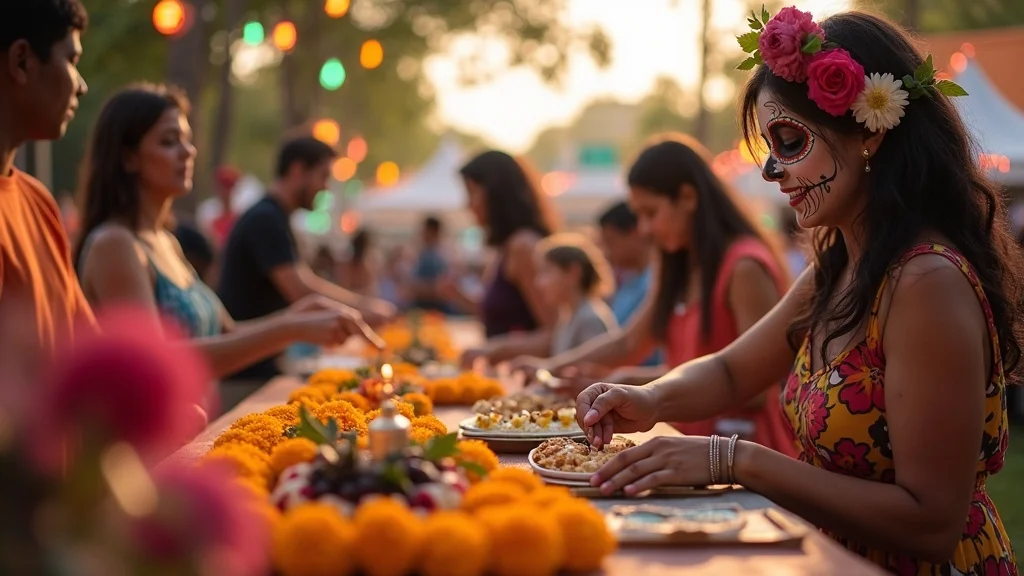
Honoring Día de los Muertos Traditions and Food Respectfully: Dos, Don'ts, and Meaningful Participation
As Día de los Muertos gains popularity, it’s essential to participate with understanding and respect for its deep cultural meaning. Here are some key dos and don’ts for honoring día de los muertos traditions and food authentically:
DO learn about the symbols, rituals, and foods—ask questions, attend workshops, and listen to stories from those who celebrate.
DO participate in public events and support local artisans and food vendors, especially those from the Mexican and Latinx community.
DON’T treat the holiday like Halloween or use symbols out of context—skull face paint and marigolds have deep meaning.
DON’T bring disrespectful costumes, make light of rituals, or appropriate foods or altar materials without permission.
Tips: Approach all aspects of the celebration with openness, humility, and gratitude—Día de los Muertos is an invitation to connect, not just consume.
Building your own ofrenda, sharing a meal, or volunteering at a festival can be beautiful ways to honor the spirit of the holiday. Remember that behind every marigold and every loaf of pan de muerto lies centuries of resilience, tradition, and hope.
People Also Ask: Día de los Muertos Traditions and Food
What are the traditions of the Day of the Dead in Mexico?
In Mexico, Day of the Dead is celebrated through a mosaic of rituals: families build ornate ofrendas decorated with marigolds, candles, photos, and personal mementos; visit and adorn gravesites; and prepare and share traditional foods like pan de muerto, mole negro, and calabaza en tacha. Music, storytelling, and collective gatherings at cemeteries or in city plazas are also vital—a true celebration of both memory and presence.
Exploring ofrendas, family gatherings, and artistic expressions honoring los muertos
Artistic expressions abound: from La Catrina parades in Mexico City to intricate papel picado adorning altars and streets. The art of building the ofrenda is often learned at home, passed down as a cherished skill. At the heart of every gathering is the reunion of family—living and departed—a testament to the idea that, even in death, love is never lost.
What does food symbolize in the Day de los muertos?
During día de los muertos traditions and food, each dish serves as a spiritual offering. Food acts as a bridge between worlds, showing love and care for departed relatives by preparing their favorite foods and sharing them with family and guests. Sweets like sugar skulls celebrate the vitality of life even in remembering death, while main dishes like pan de muerto and tamales bring families together to make, share, and honor treasured recipes.
The importance of sharing food as a spiritual offering during día de los muertos traditions
Sharing food on Día de los Muertos is considered a sacred gesture. By placing meals and treats on the ofrenda, families invite the spirits of loved ones to join them in celebration, symbolically nourishing the bond between the living and the departed. Afterward, the meal becomes a shared ritual among friends and family—a lasting reminder that memory and gratitude are best expressed at the table.
What not to do on Day of the Dead?
It’s crucial not to treat Día de los Muertos as just another dress-up or party. Avoid trivializing symbols like sugar skulls or marigolds, and steer clear of costumes that are disrespectful or culturally inappropriate. Always ask permission before taking photos of people or private ofrendas, refrain from touching altar objects, and honor the traditions as acts of remembrance, not entertainment.
Common mistakes to avoid when participating in día de los muertos traditions and food
Common mistakes include confusing the holiday with Halloween, misusing sacred symbols, or neglecting to understand the true meaning behind rituals and foods. Participating only for social media photos, or consuming traditional foods without honoring their origins and preparation, can also be seen as disrespectful. The best way to join respectfully is to approach every part of the celebration with curiosity and humility.
What are three things people do on Day of the Dead?
Three core traditions are: 1) Building and decorating ofrendas (altars) with photographs, marigolds, and offerings; 2) Visiting cemeteries to clean graves, share stories, and serenade ancestors with music or prayer; 3) Preparing and sharing traditional foods like pan de muerto, tamales, and sugar skulls in gatherings that unite families and communities.
Listing the most significant Day of the Dead traditions and their meanings
Ofrendas: Welcoming the spirits home
Marigolds and candles: Illuminating pathways for souls
Food offerings: Symbolizing love, memory, and reunion
Art and dress: Embracing life through creativity
Frequently Asked Questions: Día de los Muertos Traditions and Food
Is Día de los Muertos celebrated only in Mexico?
No, while Día de los Muertos originated in Mexico, it is now celebrated in many countries across Latin America and communities around the world—especially wherever Mexican and Latinx people keep traditions alive.Can anyone participate in Día de los Muertos traditions?
Yes—everyone is welcome to join with respect and genuine curiosity. It’s a celebration meant to unite, inspire, and educate, as long as traditions and symbols are honored thoughtfully.What are some ways to respectfully join local Día de los Muertos festivals?
Attend public events, ask organizers about participation, volunteer, support local artists and bakers, and always approach the holiday with humility—listen and learn before acting.How do you make authentic pan de muerto at home?
Most recipes begin with flour, eggs, butter, orange zest, and yeast—decorated with crossbone shapes and dusted with sugar. See our step-by-step video above or connect with a local panadería for tips!
Key Takeaways: The Spirit Behind Día de los Muertos Traditions and Food
Día de los muertos traditions and food fuse ancient beliefs with communal celebration
Symbolic foods like pan de muerto and sugar skulls carry powerful meaning
Celebrating Día de los Muertos unites family, honors ancestors, and strengthens communities
Embrace Día de los Muertos Traditions and Food: Continuing the Celebration
"Honoring tradition is not about looking back—it’s about moving forward together as a community."
Want to keep celebrating Latin American culture all year long? Explore festivals, traditions, and community stories in our Culture & Events section.
Want to keep celebrating Latin American culture all year long? Explore festivals, traditions, and community stories in our Culture & Events section: https://latinamericandining.com/culture-events
Día de los Muertos is just one example of how food and tradition intertwine to create lasting memories and vibrant communities. If you’re passionate about discovering more ways to celebrate Latin American heritage through cuisine, consider exploring the diverse flavors of Colombian dining and the stories behind its most beloved dishes. Uncover the culinary richness of Colombia and see how each region’s specialties can inspire your next gathering or menu, deepening your appreciation for the cultural mosaic that makes Latin American food so extraordinary.
 Add Row
Add Row  Add
Add 

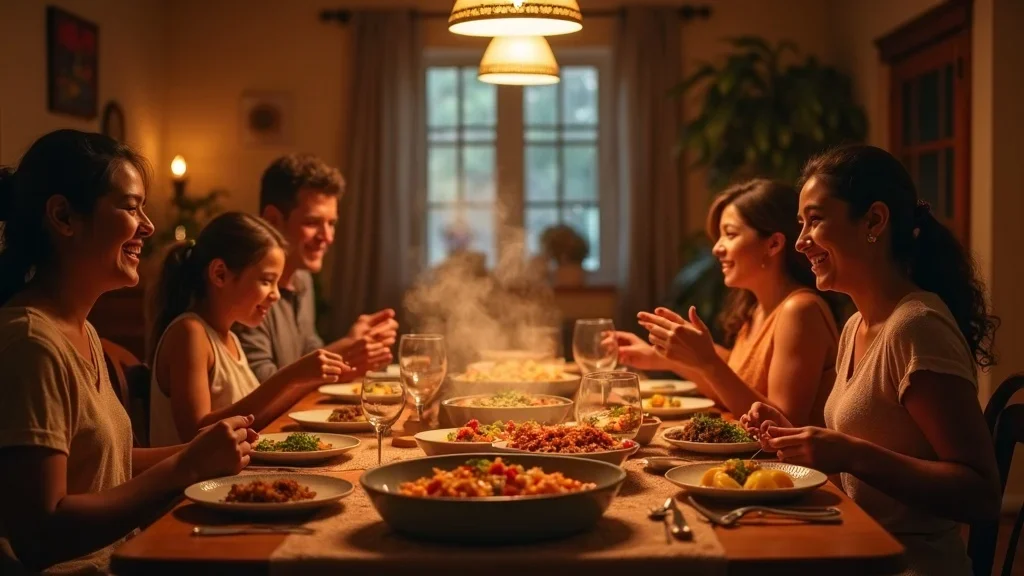


Write A Comment